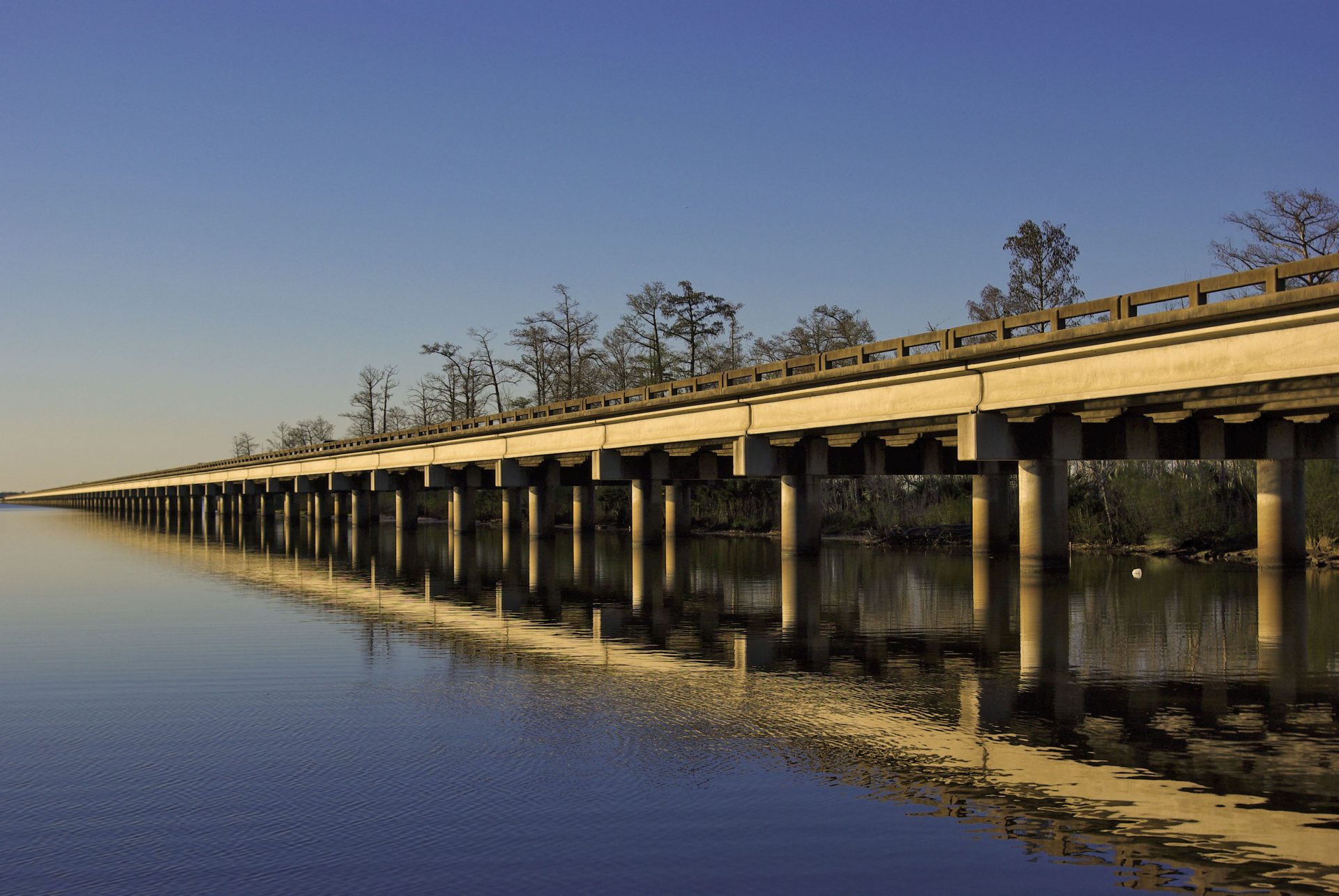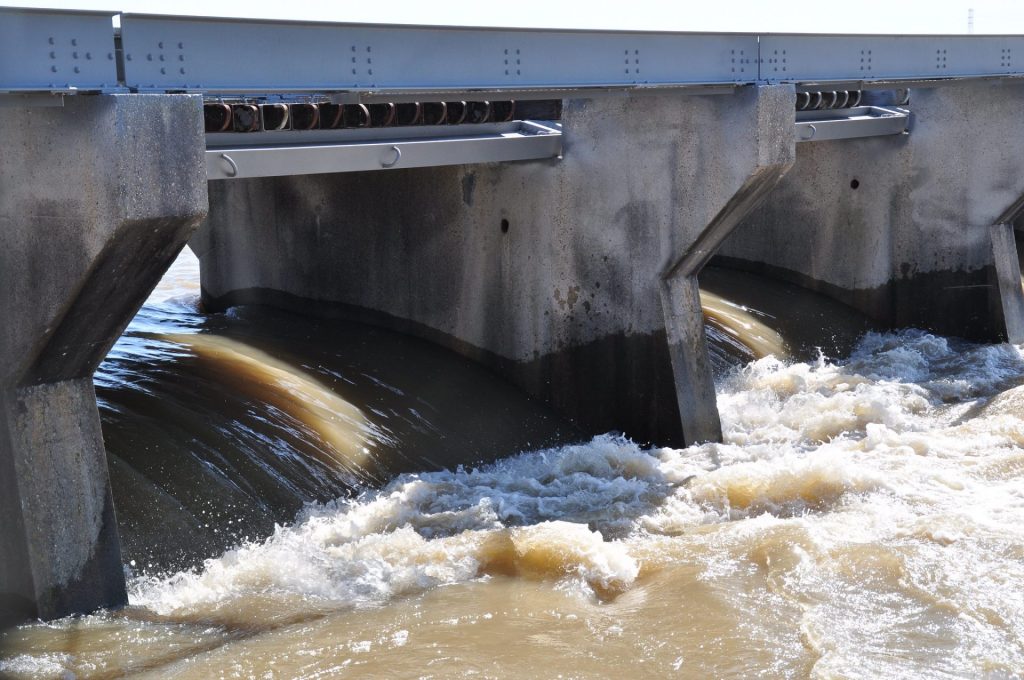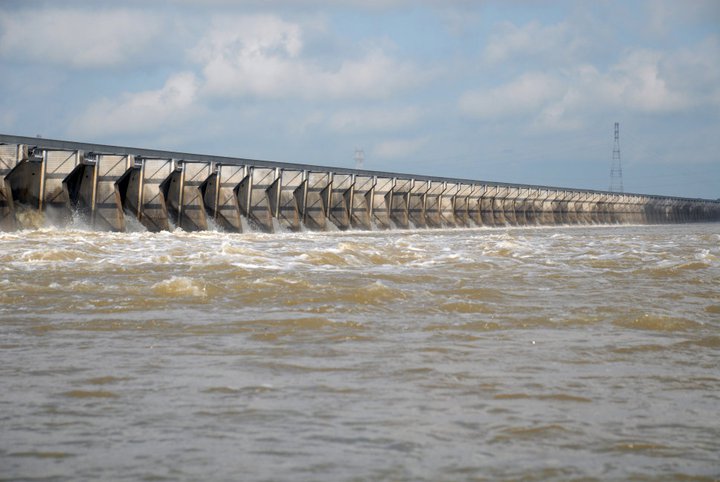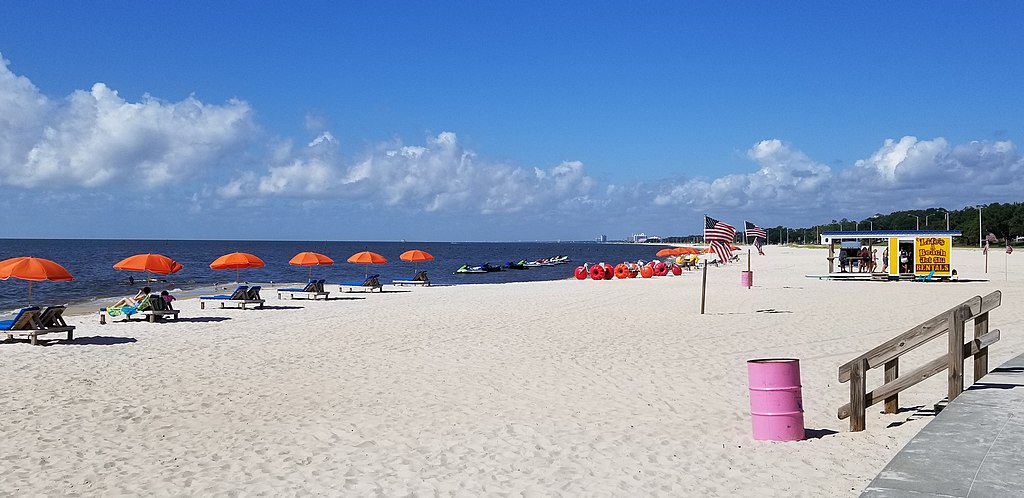
Managing the Mississippi:
The Bonnet Carré Spillway
The way the Mississippi river flood structures are managed creates problems for downriver communities and waterways.
Keep up-to-date on the issues you care about. Sign up for Healthy Gulf updates to stay informed, volunteer, and take action.
Get Updates.
Stay Informed.
The Problem
For the first 77 years of its existence, the Bonnet Carré Spillway Was opened approximately once every ten years. In the last nine years, The spillway has been opened six times, including twice in 2019.

The Bonnet Carré Spillway (Spillway) is a flood-control project on the lower Mississippi River operated by the Mississippi River Commission (MRC) and the U.S. Army Corps of Engineers (the Corps), located approximately 33 river miles upstream of New Orleans. The Spillway was intended as a relief valve for the river to reduce the risk of flooding in New Orleans by diverting a massive amount of river water from the Mississippi River into the Lake Pontchartrain Basin and eventually into the Mississippi Sound. The river water carries a heavy pollutant load, causes salinity levels to crash, and is colder than the warm waters in the receiving lakes and sound, causing an array of impacts that adversely affect wildlife and destroy habitat. In 2019 alone, when the Spillway was opened twice for a total of four months, oyster beds were destroyed, hundreds of dolphins died and washed ashore, and the U.S. Department of Commerce declared a fisheries disaster as a result of the damage done to commercial fisheries.
Numerous species federally protected under the Endangered Species Act are present within the area impacted from water diverted by the Spillway, including the endangered Kemp’s Ridley, hawksbill, and leatherback sea turtles and threatened loggerhead sea turtle, green sea turtles, threatened Eastern black rails, piping plovers and red knots; endangered pallid sturgeon and shovelnose sturgeon, the threatened Gulf subspecies of Atlantic sturgeon, the threatened giant manta ray and the threatened West Indian manatee. Yet neither of the federal agencies have acknowledged or evaluated the many potential impacts of the operation of the Spillway on many of the threatened and endangered species that inhabit and migrate through the Lake Pontchartrain Basin and Mississippi Sound.
The frequency in which the Spillway is opened and the duration of such openings have also increased. For the first 77 years of its existence, the Corps and MRC opened the Spillway on average approximately once every ten years. In the last nine years, the agencies have opened the Spillway six times, including twice in 2019. And as more extreme storms and varied weather increase the number and intensity of floods in the lower Mississippi River valley region, it is likely that the federal agencies will continue to open the Spillway more frequently and for increasingly longer duration.
The Opportunity
Complete the comprehensive formal consultations required by the Endangered Species Act for all threatened and endangered species that may be affected by operation of the Spillway prior to future Spillway openings. The Endangered Species Act (ESA) requires the federal agencies to complete a formal ESA consultation to evaluate the impacts of Spillway operations with the U.S. Fish and Wildlife Service (FWS) or the National Marine Fisheries Service (NMFS) for endangered and threatened species, and their designated critical habitat. Once completed the consultation can highlight modifications of Spillway operations needed to protect imperiled species and critical habitat. Because the agency has opened the Spillway six times in the last nine years and predictions are that more extreme storms and varied weather increase the number and intensity of floods in the lower Mississippi River valley, there is an urgent need to complete formal consultations and change Spillway operations to protect imperiled species and their habitat before the Spillway is opened again.
Changing the Operation and Management of the Bonnet Carré. The federal agencies retain discretion to identify and implement operational changes for the Bonnet Carré Spillway that may mitigate impacts on threatened and endangered species. The operations manual for the Bonnet Carré Spillway was last updated/amended in 1999. Clearly, the manual needs to be revisited to identify possible changes to Spillway operation that might reduce impacts to species that rely on Lake Pontchartrain and the Mississippi Sound, , including adjusting the timing and duration of the flow into Lake Pontchartrain, utilizing the Morganza Spillway and Old River Control structures to divert more water from the Mississippi River before it reaches the Bonnet Carré Spillway, and or other actions that might reduce impacts to species that rely on Lake Pontchartrain and the Mississippi Sound.
Create a Comprehensive Management Plan for the Lower Mississippi River. There are three water control structures in the Lower Mississippi River in Louisiana: The Bonnet Carré Spillway, the Morganza Spillway and Old River Control structures. The Morganza Floodway is located approximately 50 river miles upstream of Baton Rouge and can divert up to 600,000 cubic feet per second (cfs) out of the Mississippi River and into the Atchafalaya River. The Old River Control Structure is located approximately 35 river miles north of the Morganza Floodway. Although designed to prevent the main channel of the Mississippi River from flowing into the Atchafalaya, it can divert up to 620,000 cfs from the Mississippi River. The federal agencies need to develop a management plan that coordinates operation of the Morganza Spillway, the Old River Control Structure and the Bonnet Carré Spillway to reduce the amount of water that will need to be diverted through the Bonnet Carré Spillway to avoid flooding.
Create a Comprehensive Management Plan for the Lower Mississippi River.

What Healthy Gulf Members Are Doing
It’s time to change the way we manage the Lower Mississippi River.

Healthy Gulf members are calling upon the Mississippi River Commission and the Army Corps of Engineers to:
- Complete a comprehensive formal consultation required by the Endangered Species Act for all threatened and endangered species and their habitat that may be impacted by operation of the Bonnet Carré Spillway before future openings of the Spillway that identifies changes needed to mitigate harmful impacts of Spillway operation. These species include endangered Kemp’s ridley, hawksbill, and leatherback sea turtles and threatened loggerhead sea turtle, green sea turtles, threatened Eastern Black rails, piping plovers and red knots; endangered pallid sturgeon and shovelnose sturgeon, the threatened Gulf subspecies of Atlantic sturgeon, the threatened giant manta ray and the threatened West Indian manatee.
- Complete a comprehensive National Environmental Policy Act analysis of the operation and maintenance of the Bonnet Carré Spillway and changes in operation needed to mitigate, to the greatest extent possible, negative impacts to Lake Pontchartrain and the Mississippi Sound and the species that depend upon them.
- Implement changes to the operation of the Bonnet Carré Spillway needed to mitigate adverse impacts to threatened and endangered Species, marine mammals, particularly dolphins, and commercial fisheries;
- Develop a comprehensive management plan to control flooding in the Lower Mississippi River basin through coordinated operation of the Old River Control Structure, Morganza Spillway and Bonnet Carré Spillway, to reduce negative impacts on receiving waters and the species dependent upon them.

WHAT YOU CAN DO
Learn more. Stay informed. Take Action.


